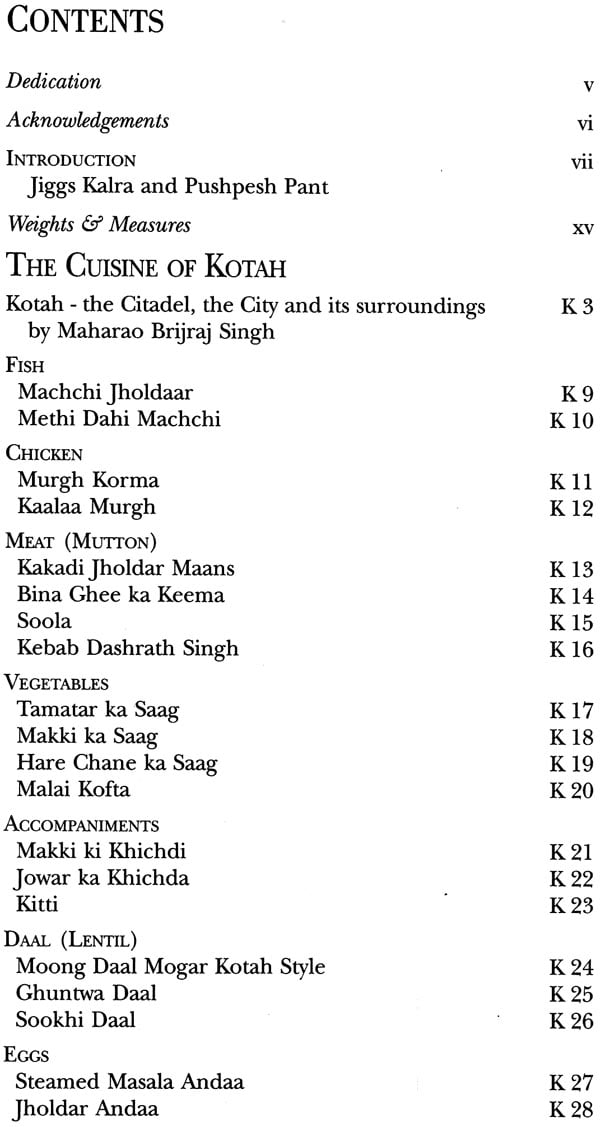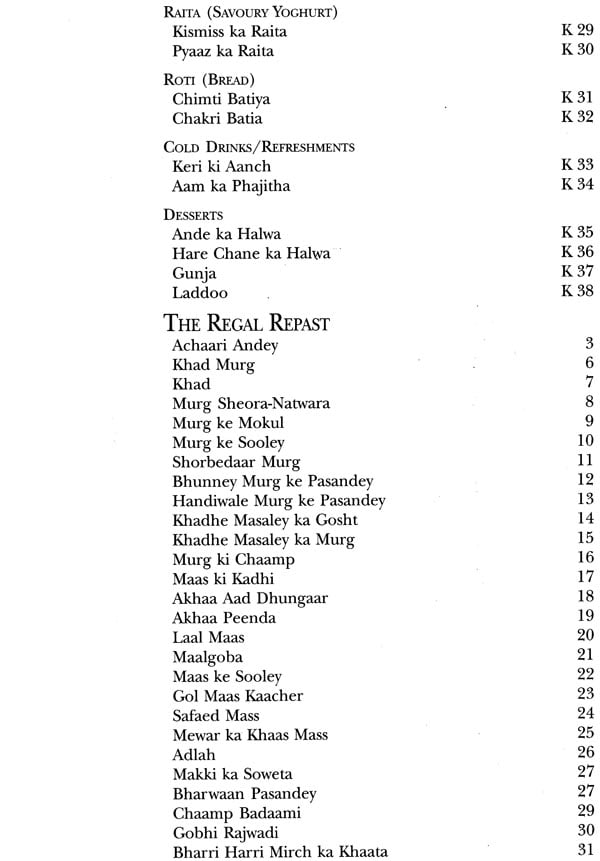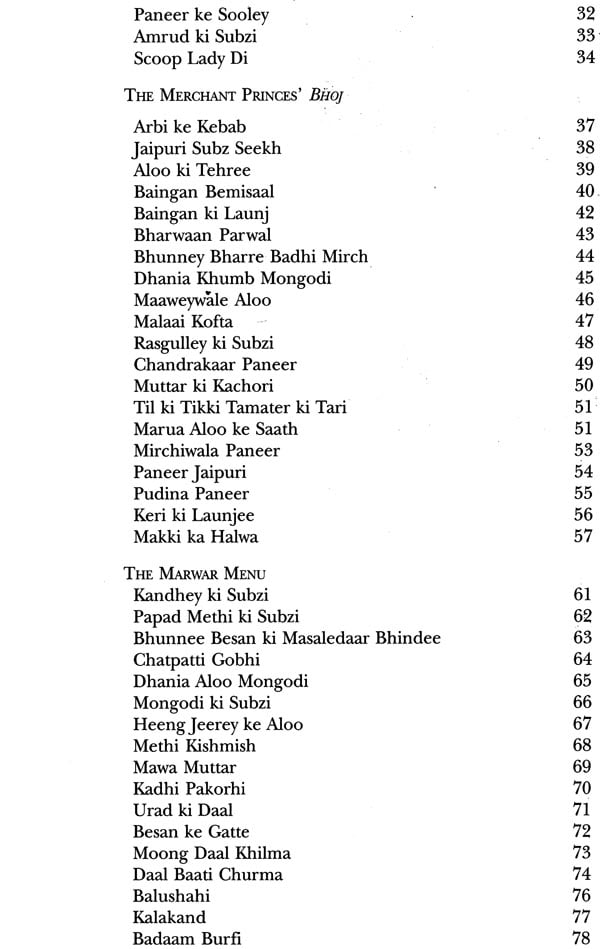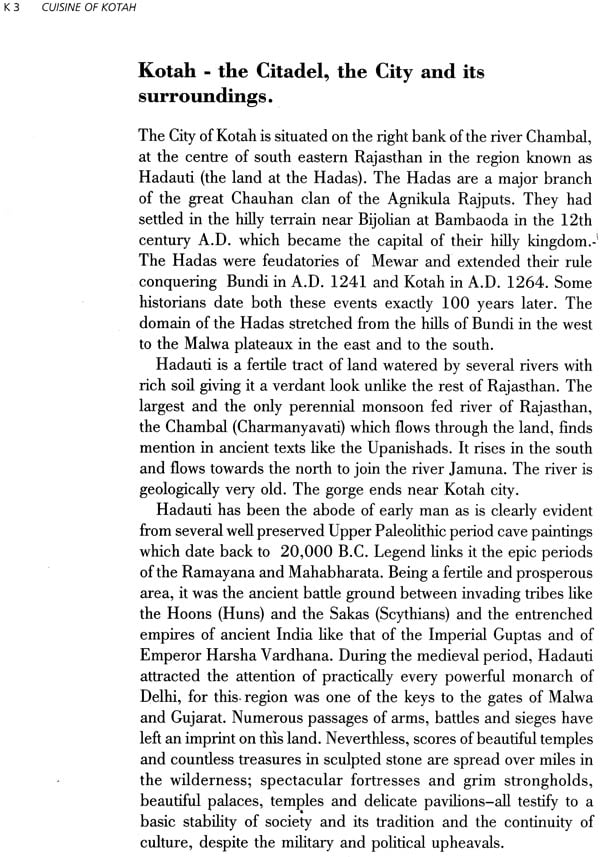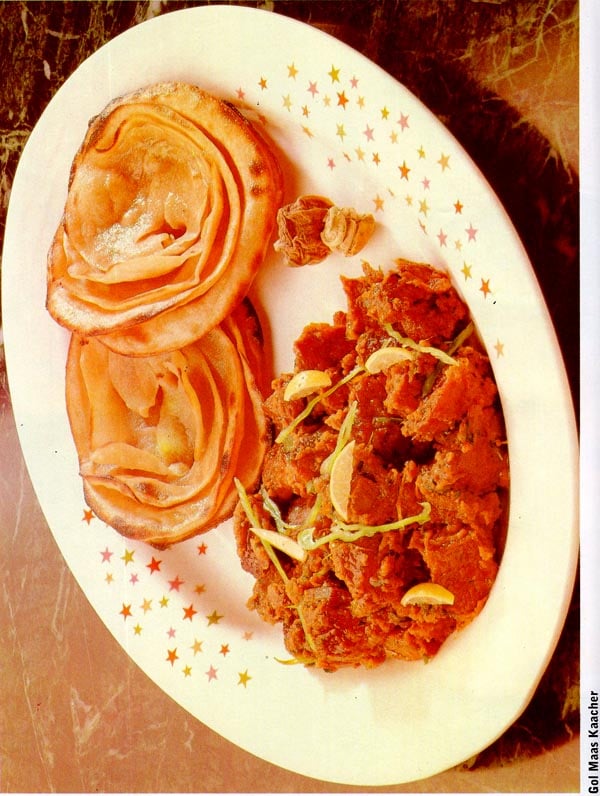
Classic Cooking of Rajasthan (With A Special Section On Cuisine of Kotah)
Book Specification
| Item Code: | NAR772 |
| Author: | Maharao Brijraj Singh and Maharani Uttara Devi |
| Publisher: | Allied Publishers Pvt. Limited |
| Language: | English |
| Edition: | 2013 |
| ISBN: | 9788184248388 |
| Pages: | 136 (14 Color and 25 B/W Illustrations) |
| Cover: | HARDCOVER |
| Other Details | 10.00 X 7.50 inch |
| Weight | 440 gm |
Book Description
Rajasthan, the cradle of chivalry and the land of romance, evokes resplendent images of majestic forts and beautiful palaces. The food in Rajasthan, the land of princes, matches its cultural inheritance in architecture, crafts and music.
The present-day state touches the borders of Punjab and Gujarat on one side and Haryana and Madhya Pradesh on the other. Its cuisine has been enriched by diversity of influences. There is a strong tradition of vegetarian repast, cherished by Jains who lay the greatest emphasis on non-violence. Intrepid traders and merchant princes have travelled to different parts of the country from the marwar region and have an all-India presence and in the process have made a unique contribution to this repertorie.
The folk song, Rang rangeelo maro Rajasthan, aptly paints word pictures that reflect accordingly the vibrant splashes of colour in tie-and-dye fabric, exotically decorated camels and scarlet sunsets amid the sand dunes. The tales of heroism that the balladeers sing reverberate long after the singing has ceased. The melodies are haunting that keep fresh the memory of beautiful princess who aroused great passions and at times triggered wars changing the course of history. Not much grows in the arid wasteland of the desert but this has not cramped the culinary style of those who dwell there. They have imaginatively crated myriad delicacies from lentils, dairy produce and what little vegetables are locally available.
The present edition contains a new section on the Cuisine of Kotah contributed by Mahrao Brijraj Singh and Maharani Uttara Devi of Kotah. Highly respected gourmets in their own right, the authors of this section have added vignettes of the history of Kotah with photographs of a picturesque landscape to augment their text.
Jiggs Kalra, pioneer food columnist and culinary TV anchor, gastronome and food consultant, has been consultant to various national and international hotels and hotel chains. He has conducted memorable Festivals of India frequently both in India and abroad, and is considered an Ambassador of Indian cuisine worldwide. Jiggs has been inducted into the International Food and Beverage Forum Hall of Fame (2004) for his personal commitment and exceptional contribution to the international aspects of the F&B industry.
H. H. Maharao Brijraj Singh of Kotah entered Parliament (L.S.) in 1962 and served for three consecutive terms. An alumnus of Mayo College. Ajmer and St. Stephen’s College. Delhi, he has served on many consultative committees of the Parliament and of the State Government of Rajasthan, during his years in public life. He is deeply interested in the arts and history, and wrote a definitive book on Kotah paintings. Kingdom That Was Kotah. He is a keen wild life conservationist and photographer.
H. H. Maharani Uttara Devi of Kotah daughter of Maharajkumar Indrajitendra Narayan of Cooch Behar, was educated in Switzerland, and later in Chennai.
Rajasthan or the 'Land of Kings' is also known as the Cradle of Chivalry. The scorching sands of Thar, the great desert, that stretches out for miles, have for centuries witnessed unmatched scenes of valour. This is where historic battles have been fought to defend one's home and hearth and above all to preserve honour. Memories are yet green of fabulous beauties like the Princess Padmini of Chittor and legendary warriors like Rana Sanga. The traditional song of welcome refers to Rang Rangilo Rajasthan that translates as 'the tract of land resplendent with many hues'. This is indeed an apt description of a magical realm. The landscape is dotted with impregnable forts like Mehrangarh, cities enclosed in citadels like Chittor, beautiful palaces like the Lake Palace at Udaipur sparkling like precious gems set in precious ornaments. The bright splash of turbans and ghagra cholis in tie-and-dye or draperies decorated with mirror-work cast a bewitching spell on the visitors. The food in Rajasthan is no less alluring than its rainbow-hued costumes, seductive beauty of the landscape and delicate miniature paintings.
Jaipur, the Pink City, is one of the most beautiful in the land. It was built during the reign of Sawai Jaisingh II in the last quarter of the 17th century. Planned by the gifted Bengali architect Vidyadhar, it has wide roads and streets, palaces, elegant buildings and impressive market plazas, an observatory and many places of worship for Hindus and Muslims. The city nestles under the shadow of guarding forts Nahargarh and Jaigarh perched atop the hillocks encircling it and lies a short distance away from the old capital of the Kachwaha rulers at Amer.
Jaipur is famous for its diamond cutters, bespoke marble statues, light as feather, and warm as Cashmere dulai, quilts. The rulers of Jaipur were the first to make peace and establish matrimonial alliances with the Moguls and escaped wanton destruction in long raging warfare. This allowed them to patronize arts—both performing and culinary. Jaipur boasts of its own school of Kathak dance and style of khayal singing. The tradition of another classical style, the dhrupad, is also strong. In more recent periods, Jaipur has won international renown for the skill of its blue-blooded polo players. Jaipur is the centre point of the Shekavati region. This Janus-faced city provides the gateway to the fertile plains of the rivers Ganga and Yamuna lying to the east, and has imbibed diverse cultural influences from the imperial court at Delhi as well as from its Rajput neighbour to the west. Dozens of thikana in this erstwhile princely state may be compared with the taluka in Avadh, each proud of its gastronomic legacy and tradition of lavish hospitality. The princely `spread' that a gastronome can savour at Jaipur–both vegetarian and non-vegetarian–is truly cosmopolitan.
Some parts of Rajasthan have distinct personalities and culinary identities of their own. The present edition contains a new section on the Cuisine of Kotah contributed by Maharao Brijraj Singh and Maharani Uttara Devi of Kotah. Highly respected gourmets in their own right, the authors of this section have added vignettes of the history of Kotah with photographs of a picturesque landscape to augment their text.
Another part of Rajasthan that has a distinct personality and culinary identity of its own is Marwar or marubhumi, the 'desert land proper' comprising Jodhpur and its thikana. This is the homeland_of the Marwari trading community, intrepid travellers and entrepreneurs par excellence. Many of India's leading industrialists belong to this strictly vegetarian community. The repast of these merchant princes is neither bland or frugal. It is rich in all senses of the word. Myriad delicacies are made with lentils, spiced imaginatively and then made palate-worthy by incorporating generous dollops of ghee. Daal baati churma may have been the staple in the past but today paneer, mawa and dried fruits and nuts embellish the recipes. The denizens of Jodhpur claim that more than 125 varieties of mirchi bada are made in their city and they challenge the Jaipurwalas to match the bite of their mawa or pyaz kachauri. The arid land does not have many fresh vegetables and the locals have learnt to cope with this chronic shortage by the most of what is available — kair, sangri and kanda. Besides these subzis, fenugreek seeds are used for delicious preparations.
The Jainas are an illustrious religious 'minority' in India who follow an even more stringent vegetarian code. They comprise an important segment of the local mercantile community. There are many Jaina pilgrimages in Rajasthan – Ranakpur, Dilwara and Mount Abu. These attract a very large number of devout visitors every year. The orthodox Jaina repast eschews roots and tubers and this has inspired the family cooks to improvise and mimic the common delicacies enjoyed by others. A festive or celebratory Jain banquet can match any other spread in taste and eye appeal. Great emphasis is laid on cleanliness, purity of ingredients and ayurvedic wisdom.
These diverse influences have mingled in Rajasthan to evolve a wonderfully satisfying repast—robust and regal at the same time, blending effortlessly the simple with the sublime.
**Contents and Sample Pages**
